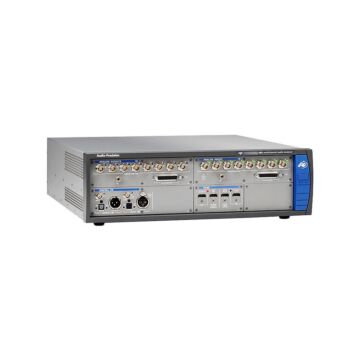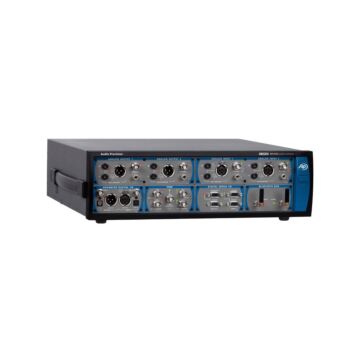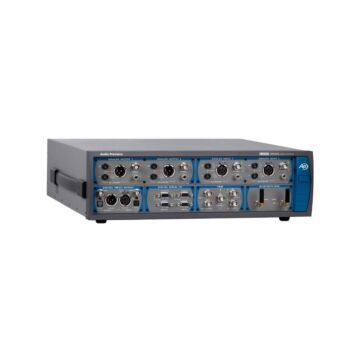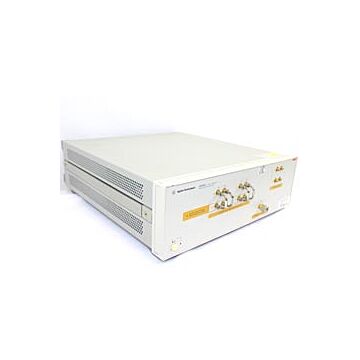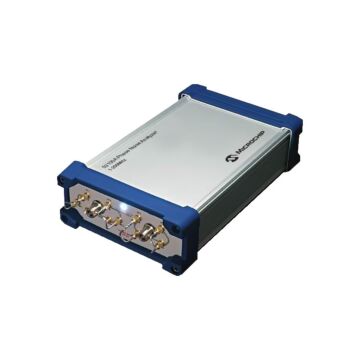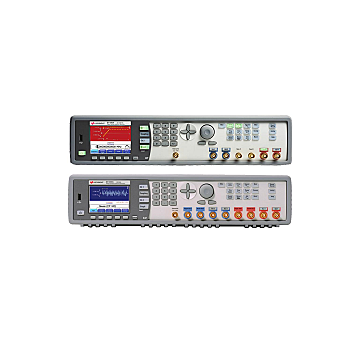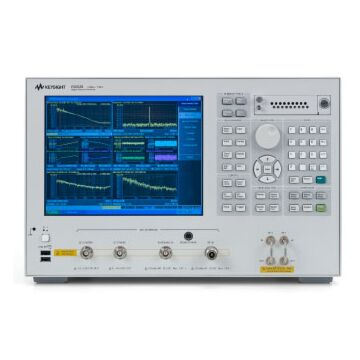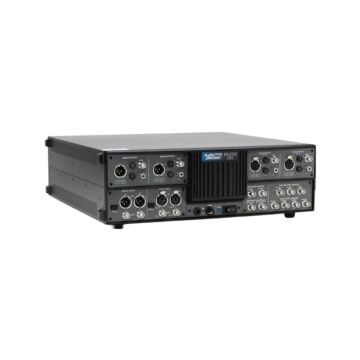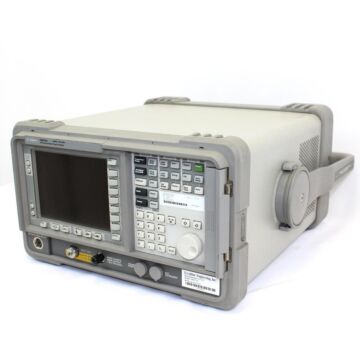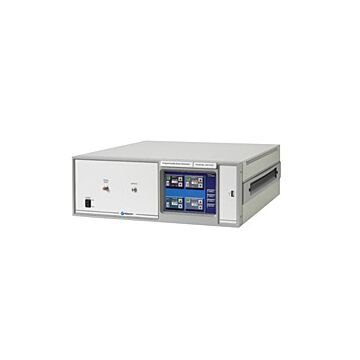Product Highlights
SR1 Audio Analyzer provides cutting edge performance in a wide variety of audio measurements with a versatile high-performance generator, an array of analyzers that operate symmetrically in both the analog and digital domains, and digital audio carrier measurements at sampling rates up to 192 kHz. SR1 uses an integrated computer running the Windows XP embedded operating system. SR1's configuration panels offer total flexibility in setting up details of the analyzer.
All of the standard audio waveforms are available and can be combined in SR1's uniquely flexible analog signal generator allowing you to create an unlimited number of test waveforms. Multitone waveforms with up to 50 tones, each adjustable in frequency, amplitude, and phase are calculated and loaded in real-time. A convenient FFT Chirp waveform is automatically synchronized to the FFT analyzer allowing instant FFT measurements of frequency response (magnitude and phase).
The same flexibility and performance is found in SR1's digital audio signal generator. Almost all the same waveforms found in the analog generator are available in the digital generator with several additional digital test waveforms
All of SR1's sampling clocks are derived from an internal timebase with 2 ppm accuracy. For the most demanding applications, an optional atomic rubidium (FS725) timebase is available with an accuracy at shipment of +5 x 10-11, and a 20-year aging specification of less than 5 ppb. The timebase may also be synchronized to an external clock, an AES11 reference signal, or any standard video signal.
SR1's versatile set of analyzers operate symmetrically on both analog and digital audio signals with no need to purchase additional options. Up to two analyzers can be run simultaneously on either the analog or digital inputs.
SR1's Time Domain Detector makes all of the standard audio measurements including Amplitude, Crosstalk, and THD+N. Continuously variable bandwidth limiting and standard weighting filters are included. The post notch-filter distortion signal can be fed to an FFT analyzer for a live spectral display of distortion, or to the rear-panel monitor output or speaker. SR1 also provides a complete set of measurements for digital interface testing.
SR1 offers unprecedented flexibility for user scripting and remote programming. On-board scripts can be written in VBScript, Jscript, or Python with full access to all of the instrument's capabilities as well as the ability to create simple user-interfaces for running tests. SR1 has a complete heirarchical GPIB command set, and GPIB commands can be sent over the standard IEE-488 interface, RS-232 port, or over the Ethernet on a TCP/IP network (VXI-11). Finally, SR1 has a complete COM interface allowing instrument operation to be automated from any COM capable application such as Visual Basic, LabView, or Microsoft Office.
Features and Specifications of the Stanford Research SR1 Audio Amplifier include:
- <-108 dB THD+N (analog system at 1 kHz, 20 kHz BW)
- 200 kHz (signal generation & measurements including FFTs)
- <-114 dBu analog analyzer noise (20 kHz BW)
- +0.008 dB flatness (analog system, 20 Hz to 20 kHz)
- Low Crosstalk (<-140 dB analog inputs)
- <800 ps jitter (700 Hz to 100 kHz)
- Dual-Channel FFTs




